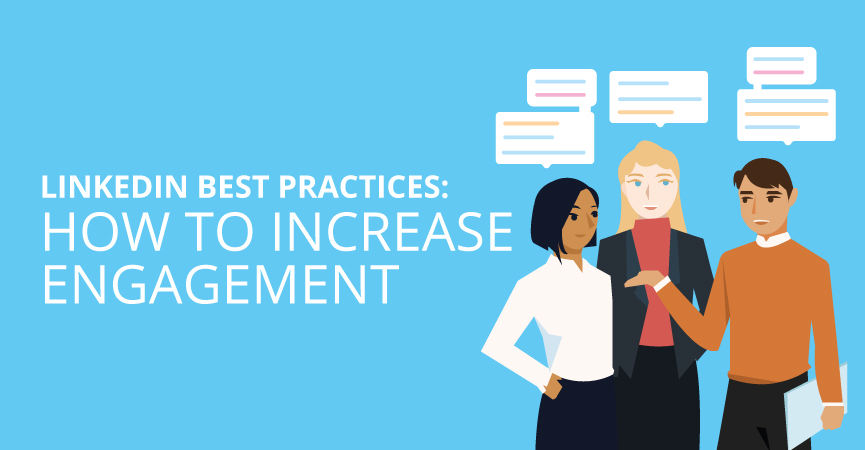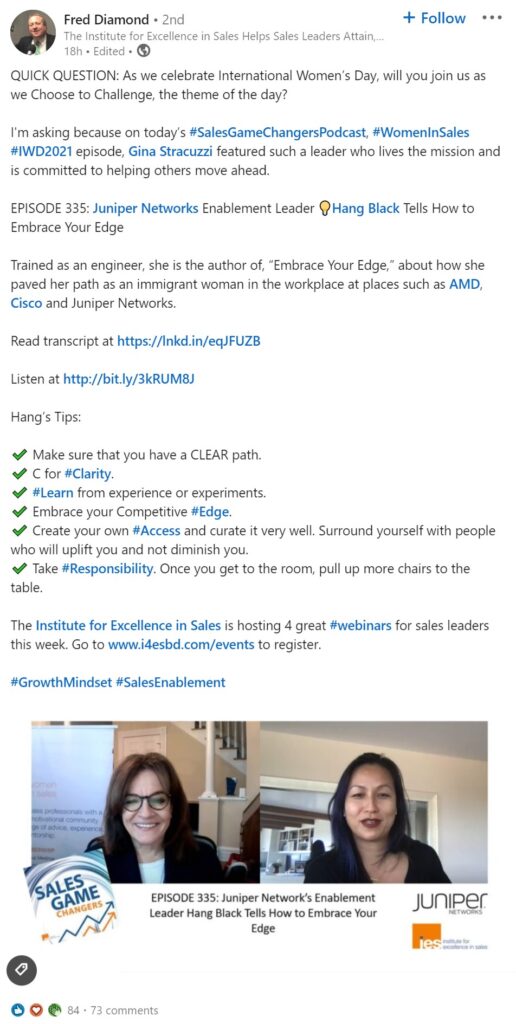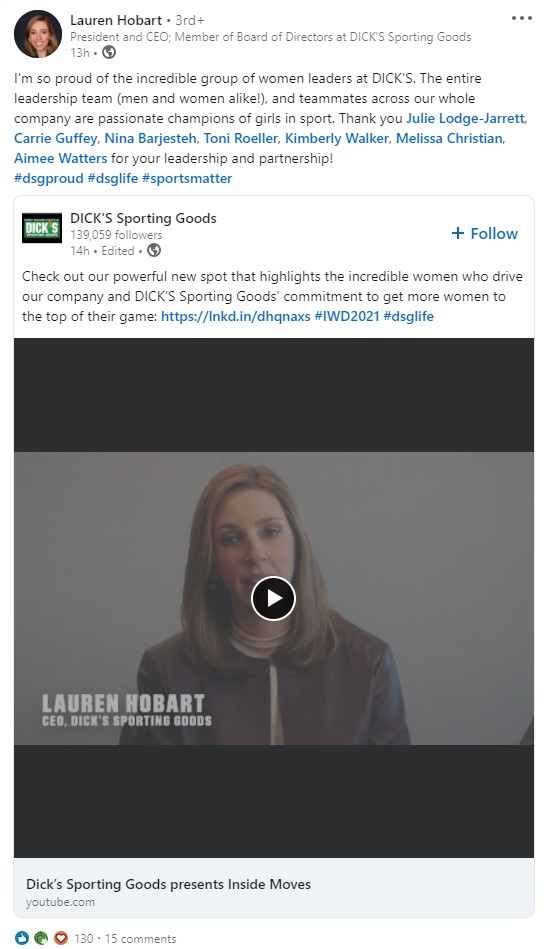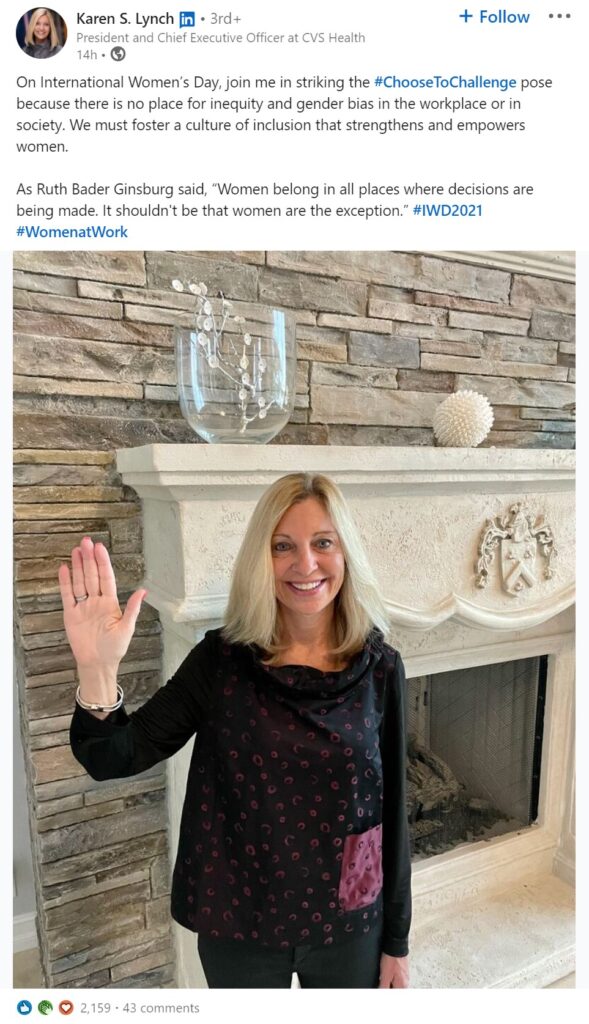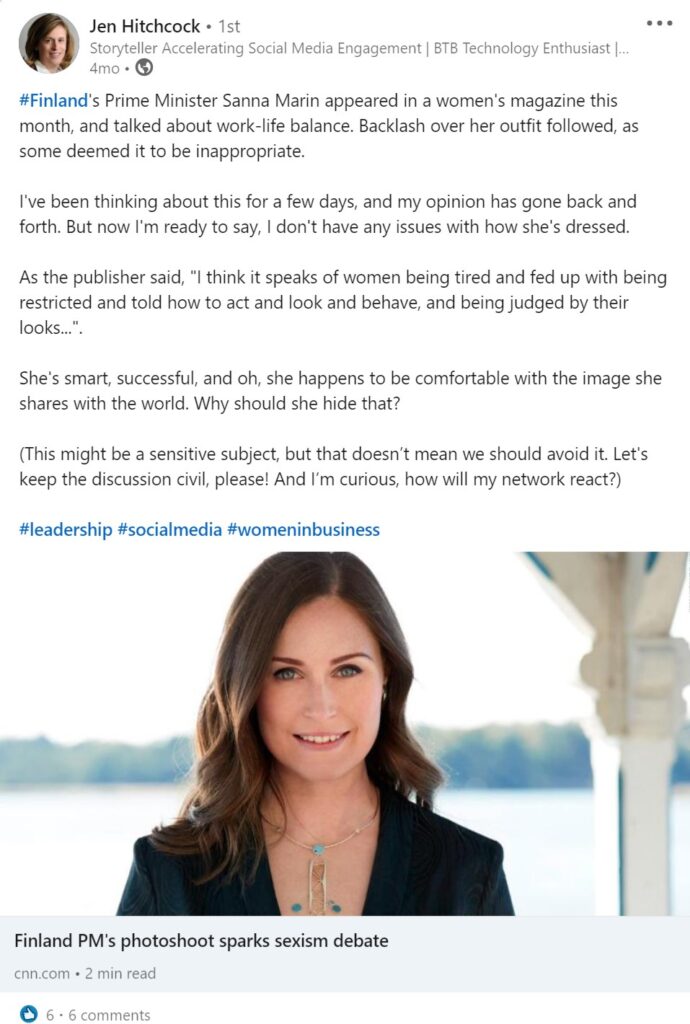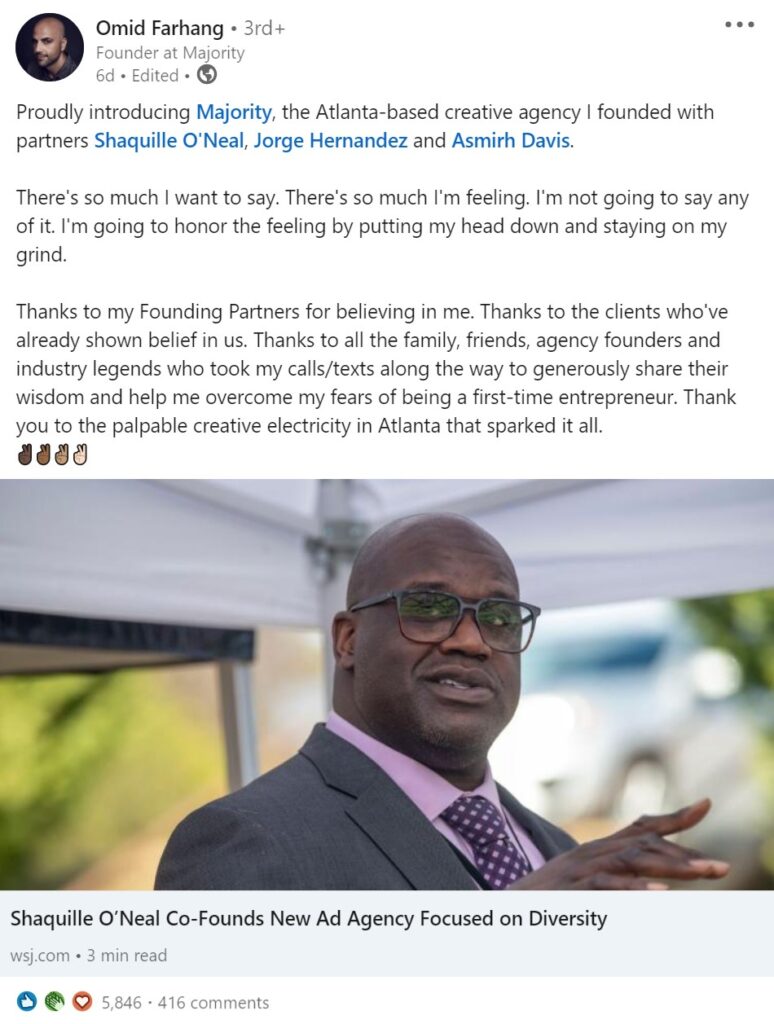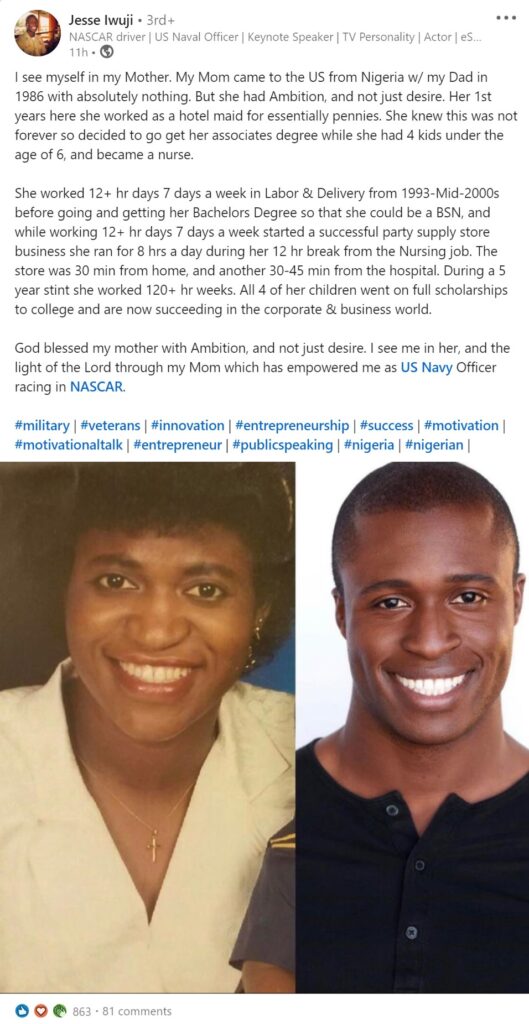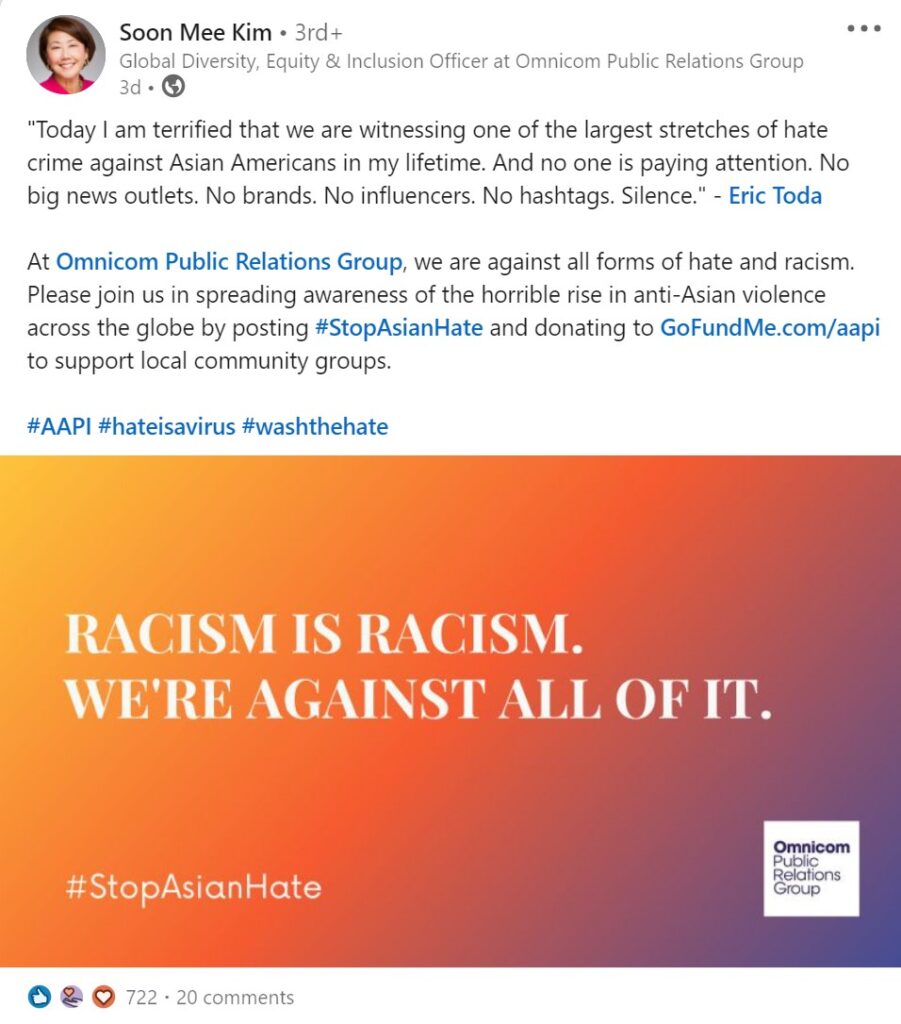How do you measure success in social media? We have so many metrics available to us, ranging from profile views to connect requests received, blog views to followers, and shares to click-through rates. The data that matters to you is going to depend on your goals for using social media.
If your goal is to generate leads or build relationships, engagement is going to be a critical metric for you. In other words, it’s not just how many people saw your post — it’s how many people liked, commented, or shared it. How many conversations did it start?
But you can get conversations started without making even one post of your own, simply by commenting on other people’s posts.
So let’s look at the two separate — and equally valuable — pieces to engagement: reactions to your own social media posts, and your engagement with the posts of others. Here are some simple tips and techniques you can use to increase social media engagement on LinkedIn, with your posts, and with your comments.
How to Choose What to Post, Share, and Comment On
It sounds so simple: Choose engaging content. But if it was easy, we’d all be online stars. When you look for interesting and relevant content to share, you need a goal. Beyond sharing an interesting news article on a topic relevant to your industry, ask yourself what you want to accomplish with your online activity.
Are you trying to educate your network, highlight an accomplishment, or announce a new business venture? If education is your aim, post material and commentary with a firm of point of view so viewers can agree, or even disagree, with you.
If you want to celebrate an achievement or announce the launch of a new project, highlight the benefit it offers to your network, not just the advantage to yourself or your company.
When you look for quality content to respond to, look for those same kind of posts. Comment on posts with an explanation of how you found the information provided to be helpful. It’s easy to click the “like” or “share” button, but quality engagement includes meaningful comments (at least five words) and shares.
Here are a few tips:
-
- When you make your own posts, tag one or two people (or companies) who are mentioned in the article or video you shared.
- Use hashtags to insert your post into niche conversations.
- When people comment on your posts, keep the conversation going by asking them a question.
- In your comments, tag people for whom the post (or the comment) would be relevant and ask them to share their opinions.
- When you comment, don’t be afraid to take a stand. Agree or disagree, and provide a reason.
- Make your comments interesting and entertaining to read. As Sally Hogshead says, be pistachio, not vanilla.
Last month, I stumbled across an intriguing business leader. Not a conventional thinker, Naveen Jain is an entrepreneur tackling huge business challenges with very human consequences. I posted my favorite takeaways from some of his videos, and tagged him in my post.
I was amazed at the response. First, by how many people in my network were already Jain followers. Second, when Jain shared my post with his own comment, and then by how many people shared my post or Jain’s share. I received dozens of new connect requests, the post was viewed over 9,500 times, and most exciting, I had some really great conversations with about 20 different people in and outside of my network.
Follow the golden rule of social media, and respond to every comment made on your posts and comments. If a person took the time to offer a comment or feedback, show you value their input with a response.
When you follow these guidelines, you do more than look active on social media — you create quality dialogue and educate your network on the areas and topics where you offer thought leadership.
Provide Value
Most of our client kickoff calls start with the question: How do you use social media? Whether it’s to learn about a new business acquaintance, keep abreast of industry news, or gather intelligence on a competitor, all these answers have one thing in common: value.
Effective social media posts bring value to the reader. Evaluate your content to determine how it can help your network.
This is where both planning and spontaneity come into play. Look for trending topics, but also try to anticipate important news. Earlier this week we celebrated International Women’s Day. Several #CEOs marked the occasion with LinkedIn posts that clearly weren’t crafted at the last minute:
Successful posts on International Women’s Day highlighted new or effective policies that promote women in the workplace. In other words, it’s news viewers can use, and a message clearly planned in advance to mark that specific day.
More spontaneous posts can also produce strong engagement. My colleague Jen Gillan Hitchcock posted last year on a timely news topic, when the prime minister of Finland was criticized over her choice of outfit for a magazine article. Critics felt her clothing was too provocative for a political leader, but many others, including Hitchcock, discussed the biases women face in the professional world.
More than 1,300 people viewed the post, and discussions in the comment section were respectful as Hitchcock initiated a dialogue on a controversial and trending topic.
We can’t ignore the fact that the driving consideration in social media strategy is increased business opportunity, and the challenge here is how to post without sounding like an advertisement.
Sheila Murphy shared information about her company’s webinar on job candidates and accounting skills. She focuses on the webinar’s content and how it could help potential attendees.
Omid Farhang recently co-founded a new advertising agency, Majority, built on the principals of inclusion and diversity. Farhang announced the launch with a LinkedIn post.
He shares information regarding his company’s mission, and why it matters in business. His commentary is far from a sales pitch, but it is still intended to promote his venture.
When a viewer leaves your social media post with a new piece of information or a different perspective, they’re likely to remember that experience the next time your name crosses their radar screen.
Your Personal, Professional Philosophy
This is something we discuss in-depth with our clients. Social media is a place to differentiate yourself and showcase your own unique selling propositions. We ask the executives we work with: Why do you get up and do this every day? Money is never their first answer.
Whether you have one co-worker or a thousand, you don’t work in a bubble void of human connections. It’s natural and normal to talk about yourself, and your personal ideas, in the workplace.
At ProResource, we explain that you might not want to use LinkedIn to post pictures of what you ate for dinner last night, or your kids in their pajamas. Instead, discuss your drive and inspiration, and share some information about yourself — it’s your personal, professional philosophy, and it can be a powerful engagement tool.
These posts often receive quite a bit of interest. In a recent LinkedIn post, NASCAR driver and U.S. Navy Reserve officer Jesse Iwuji credits his mother for fueling his ambition.
It’s a personal reflection, but his upbringing clearly had a huge impact on his professional trajectory. Such posts often prompt others to share their own motivations too. When you can share your authentic self, you often accelerate the development of meaningful business relationships.
As Global Diversity, Equity & Inclusion Officer at Omnicom Public Relations Group, it makes sense for Soon Mee Kim to comment on social issues related to diverse people and ideas. But as an Asian American, her post on anti-Asian hate crimes is also personal.
The connection to social issues doesn’t always need to be so obvious. You can stand out as a business leader when you take a stand on prominent social issues and define your business values. Responses to these posts are often overwhelmingly positive on LinkedIn (but not always) and launch substantive conversations. When your comments contribute to a positive dialogue, you’re likely to receive a response.
You shouldn’t post only on these more subjective issues, but don’t be afraid to loosen your tie and expose a part of your heart and mind on social media.
Let’s Talk
If you made it this far in the blog, I hope your wheels are turning on how you can increase engagement on LinkedIn and other professional social media platforms. Let’s continue the conversation. Schedule a personal consultation.

